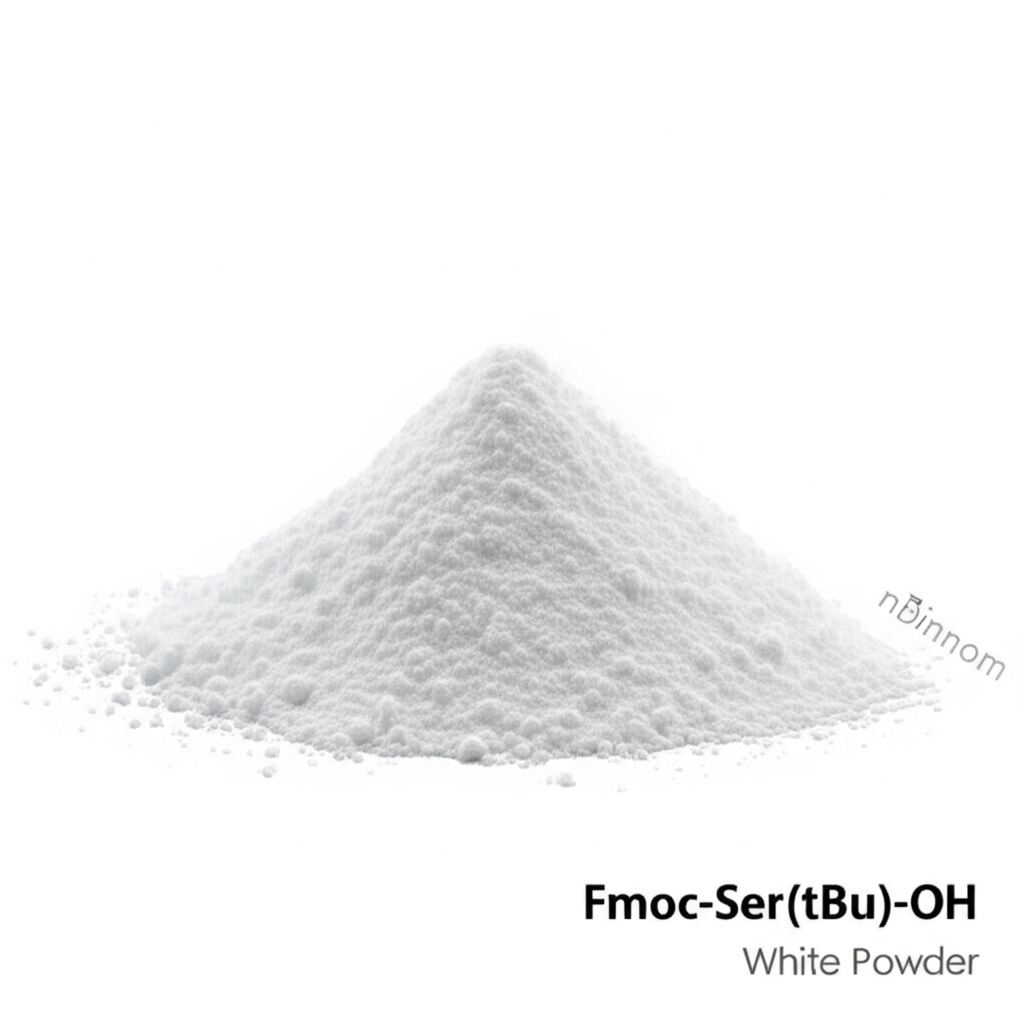Fmoc-Ser(tBu)-OH: A Key Building Block for Advanced Peptide Synthesis and Research
Essential Fmoc-protected amino acid derivative for precise peptide construction and novel biomolecular discovery.
Get a Quote & SampleProduct Core Value

Fmoc-Ser(tBu)-OH
Fmoc-Ser(tBu)-OH is a vital Fmoc-protected amino acid derivative, recognized for its critical role in Solid Phase Peptide Synthesis (SPPS). Its unique tert-butyl protection on the serine side chain offers orthogonality and stability, allowing for controlled peptide chain elongation. This compound is indispensable for researchers and chemists working on synthesizing complex peptides for therapeutic, diagnostic, and biotechnological applications, ensuring high purity and reliable results in demanding chemical synthesis.
- This compound is a key reagent in solid phase peptide synthesis (SPPS), offering efficient peptide chain elongation.
- The Fmoc group provides mild deprotection conditions, making it compatible with sensitive amino acid modifications.
- Utilizing Fmoc-Ser(tBu)-OH as a building block ensures the high purity and quality needed for advanced peptide synthesis.
- Its acid stability and base lability of the Fmoc group are critical for orthogonal protection strategies in complex syntheses.
Advantages and Benefits
Enhanced Peptide Purity
The rigorous quality control and specific properties of Fmoc-Ser(tBu)-OH contribute significantly to achieving high purity in synthesized peptides, a crucial factor for downstream applications.
Versatile Synthesis Tool
As a core component in Fmoc solid phase peptide synthesis, this derivative offers chemists a reliable tool for constructing diverse peptide sequences with complex modifications.
Streamlined Research Workflow
The availability of high-quality amino acid derivatives for peptide synthesis like Fmoc-Ser(tBu)-OH simplifies research workflows and accelerates discovery in life sciences.
Key Applications
Peptide Synthesis
Fmoc-Ser(tBu)-OH is a fundamental building block in Solid Phase Peptide Synthesis (SPPS), enabling the creation of therapeutic peptides and research tools.
Chemical Biology
Its utility extends to chemical biology, where it is used to create modified peptides for studying biological processes and developing new diagnostics.
Drug Discovery
As a key intermediate, it supports the synthesis of peptide-based drug candidates, contributing to the advancement of pharmaceutical research.
Biotechnology
In biotechnology, this compound aids in the development of novel protein and peptide-based products and research reagents.
